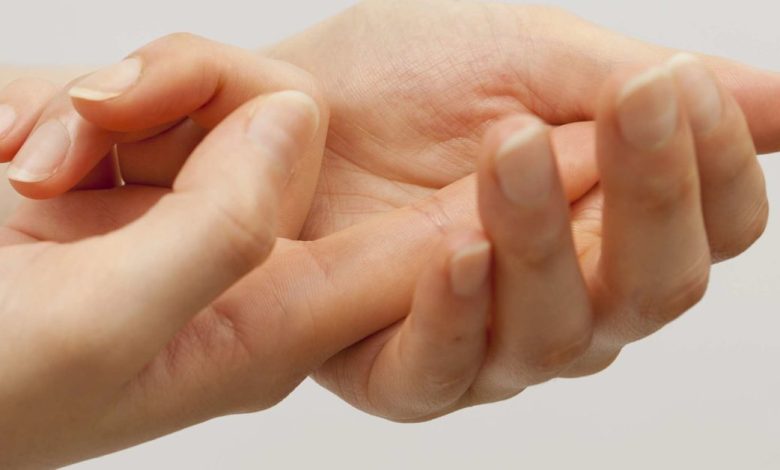Trigger Finger | Uncovering the Hidden Facts and At-Home Treatments

A trigger finger can affect any finger involving the thumb. Furthermore, more than one finger can be affected of both hands at a time. The symptoms are more in force in the morning while straightening your fingers or grabbing an object. Following effective at-home treatments for a trigger, fingers can help you eradicate the need of surgery for the trigger finger disorder.
Trigger finger is a hand disorder that causes discomfort, immobility, and a sensation of sealing or catching when you bend down or straighten your finger. It usually makes a loud cracking noise. This loud noise is compared to releasing or pulling a trigger, hence the name “trigger finger”. To reduce the symptoms of this hand disorder, various at home treatments for trigger finger are helpful.
According to the researchers (ASSH), Stenosing tenosynovitis is a condition commonly known as “trigger finger.” Additionally, if it occurs in the thumb, it is called the “trigger thumb.”
Anatomy of trigger finger:
- The flexor tendons are the long cord-like structures that connect the muscles of your forearm to the bones of your fingers.
- When the muscles contract, the flexor tendons help your fingers to bend easily. Each flexor tendon passes across a tunnel in the palm and fingers, which allows it to glide freely as the finger bends and straightens. This tunnel is known as the “tendon sheath.”
- In addition to the tendon sheath, the bands of tissue called “pulleys” help hold the flexor tendons closely to the finger bones.
- Performing hand exercises and using pain-relieving devices are some of the trigger finger treatments without surgery to get rid of the symptoms.
- As your finger moves, the strings pass through the pulleys. The pulley at the base of the finger is called the “A1 pulley” involved in the trigger finger.
- If a person suffers from a trigger finger, the A1 pulley becomes thickened or inflamed, making it difficult for the flexor tendon to glide through it as the finger bends.
- Over time, the flexor tendon becomes inflamed and develops a small nodule on its surface.
- You will feel a pop as your fingers bend and the nodule passes through the pulley.
Early signs of trigger finger:
The Symptoms can be even more painful if you do not use effective natural home treatment for trigger finger in the early stages. For example, in a serious trigger finger case, the finger locks and becomes stuck in a bent position. In some cases, it becomes essential for the patient to use the other hand to straighten the fingers.
Here are some of the most common trigger finger symptoms you should never avoid:
- Pain: The trigger finger begins with the discomfort at the base of the affected finger or thumb where the finger joins the palm. This is the only early symptom that most people suffer from. Pain occurs when pressure is applied to the A1 pulley area when gripping. It may not hurt while resting your finger. However, if you experience increased fluid production in the tendon sheath over time, it can lead to pressure and pain even without using your hands.
- Swelling: Some patients experience the development of a lump at the A1 pulley. It can occur due to developing a fluid-filled cyst or nodular swelling within the tendon (the cyst here means flexor sheath ganglion). Wands and therapeutic soaks are the widely used for treatments without surgery that offers instant results without any side effects.
- Stiffness or loss of movement: A trigger finger makes it difficult to bend the finger. You can estimate how far your fingertips are from your palm when a person is asked to bend their fingers as much as possible. In most cases, bending the finger is painful due to the compression of the liquid. As a result, a patient starts avoiding a bent finger position to limit pain. It can lead to loss of the ability to straighten the finger.
Note: when the joint of the fingers does not fully straighten for a few days or even weeks, a ligament called the volar plate becomes shortened and limits motion.
Mechanical symptoms:
A trigger finger can also cause abnormal sensations or movement, such as catching, popping, or locking. Sometimes these abnormal sensations occur when you bend or straighten your finger or both. Symptoms can be mildly painful in the early stages but increase as the interaction between the tendons and pulleys becomes tighter.
Diagnosis:
The disorder is diagnosed with a physical examination. Multiple fingers can be affected at the same time. It is most common with the thumb and ring finger. Sometimes upon waking, the affected person may give force the trigger finger with their hand.
Trigger finger treatment without surgery:
Let’s dive into the most effective at-home treatments for trigger fingers that can also eliminate the need for surgery.
- Although the treatment depends on how severe your symptoms are, you can start by avoiding excessive movement of your finger or thumb.
- Try padded gloves or trigger wand tape if you can’t quit your day-to-day tasks.
- The gentle stretching moves can help ease stiffness and improve your range of motion.
- Your doctor might give you a steroid shot into the tendon sheath to reduce the symptoms.
- A wand is a safe, painless, and effective approach to reducing the swelling in the tendon sheaths.
When to contact a doctor:
Seek medical attention immediately if the fingers are hot and joints are inflamed, as it may indicate an injection. In addition, if you have any numbness, stiffness, pain, or you are not able to straighten or bend a finger, consult with a qualified doctor for diagnosis.
The bottom line
The trigger finger treatment aims to release the A1 pulley that blocks the tendon finger movement so that the flexor tendon can glide easily through the tendon sheath. Performing the right trigger finger treatments without surgery can help you keep the symptoms at bay.
Reach out to us Wand to start your healing process with these effective natural cure trigger fingers at home.





